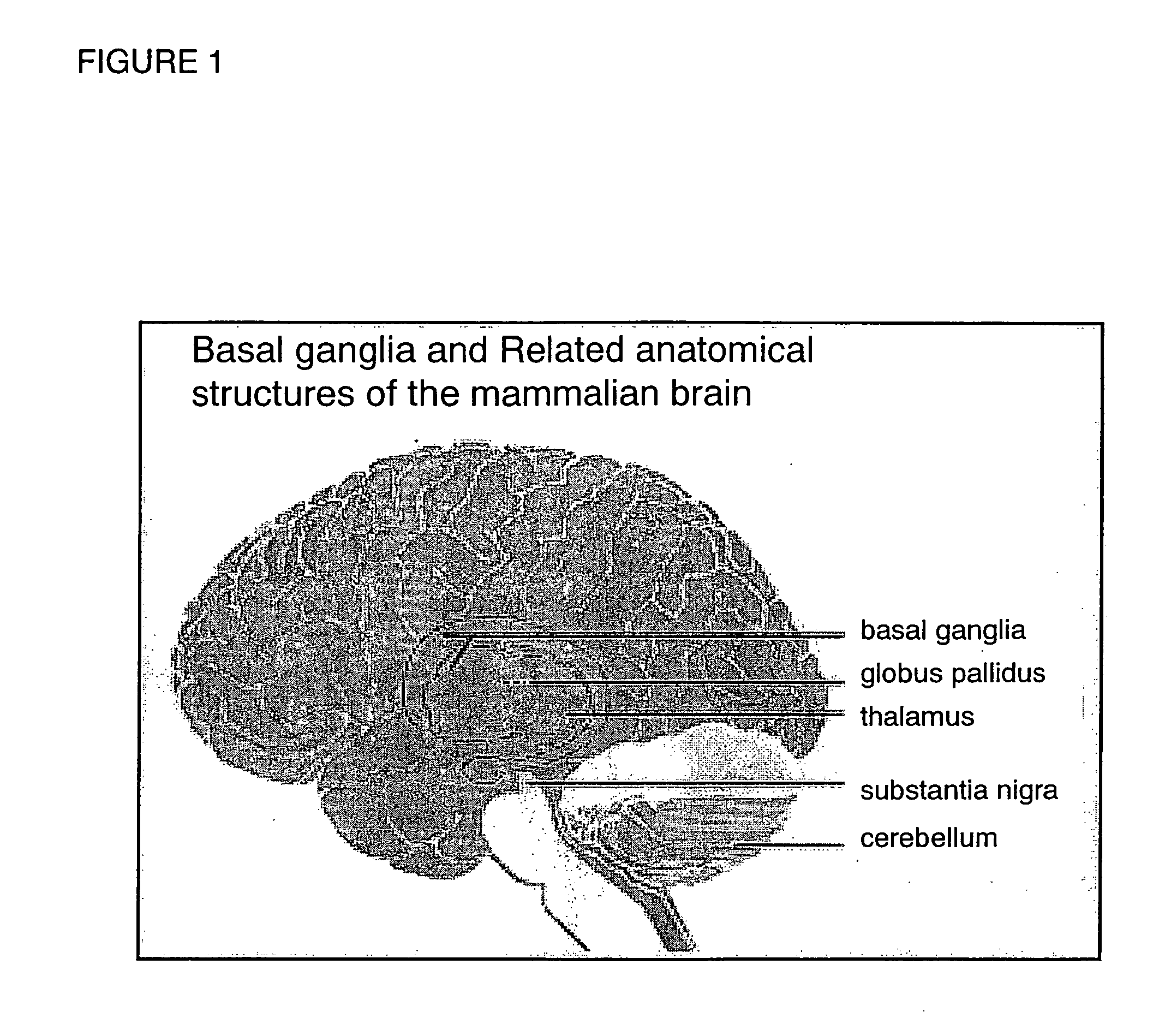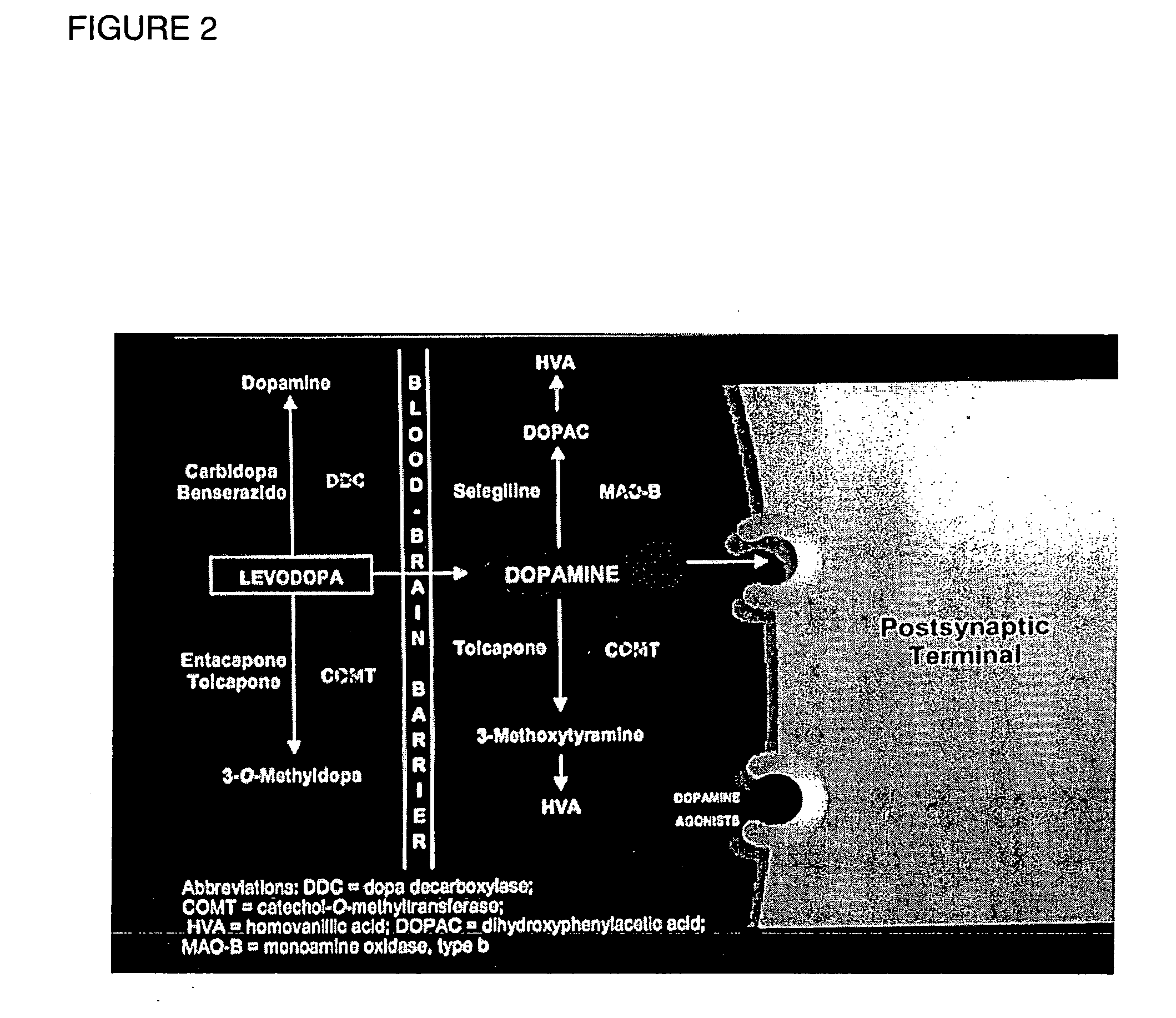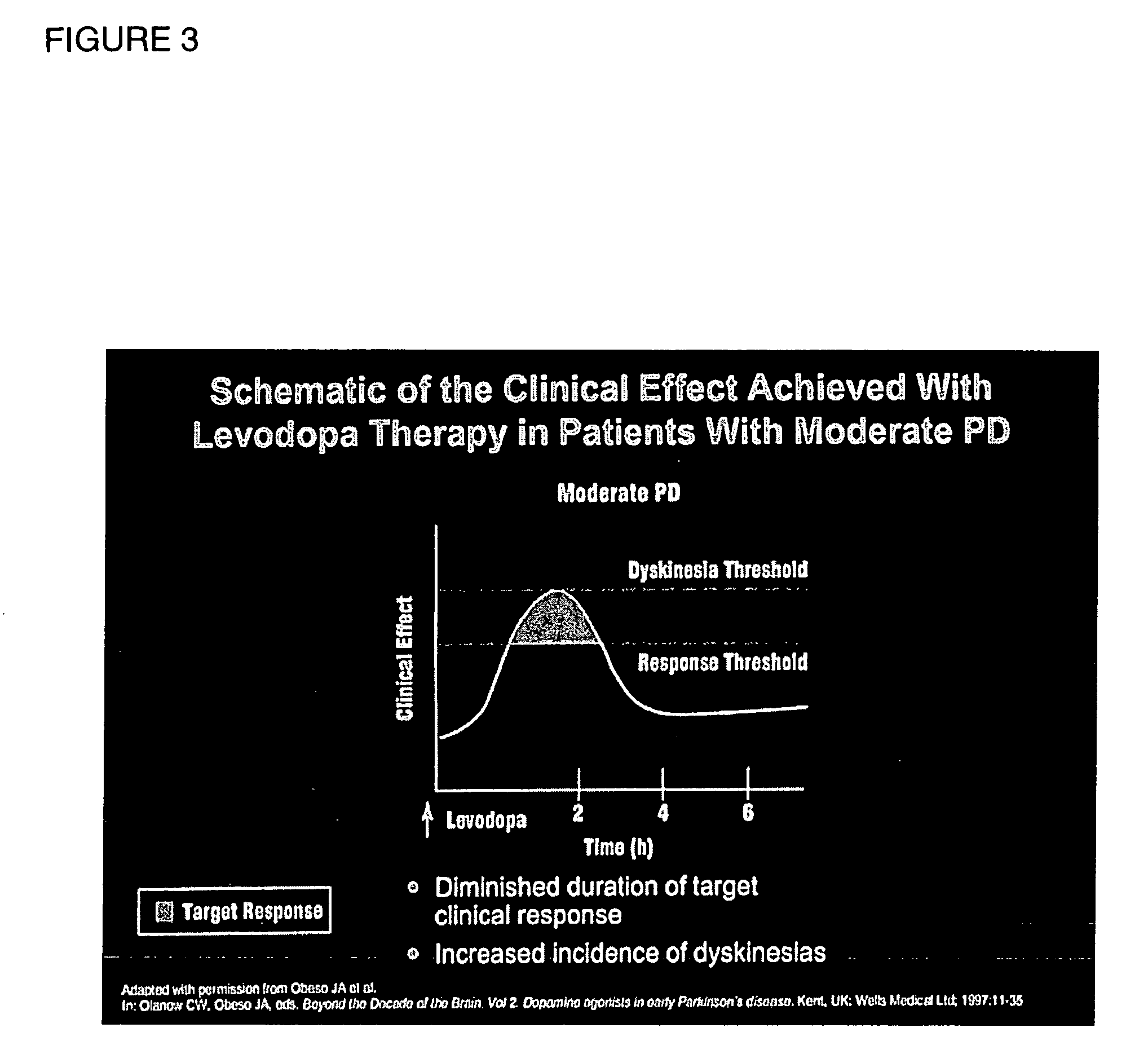Method and composition to individualize Levodopa/Carbidopa therapy using a breath test
a technology of levodopa and carbidopa, which is applied in the direction of organic active ingredients, material analysis, instruments, etc., can solve the problems of short half-life, reduced central nervous system dopamine level, and unoptimized therapeutic choices for prescribed drug therapy, so as to maximize the effect of ld base and effectively us
- Summary
- Abstract
- Description
- Claims
- Application Information
AI Technical Summary
Benefits of technology
Problems solved by technology
Method used
Image
Examples
example 1
Determination of Optimal CD Dosage for Suppression of Peripheral LD Metabolism using the 13CO2 Breath Test Method of the Invention
[0102] The present studies employed the 13CO2 breath test method of the present invention to determine the optimal dose of CD required to optimally suppress peripheral metabolism of 13C-labeled LD in individual subjects (i.e., Vlt 1 and Vlt 2). Briefly, a pre-breath test sample was collected in normal human subjects after overnight fasting (12 h) in a 1.3 L aluminum bag (Otsuka Pharmaceutical Co., Ltd., Tokyo, Japan). Briefly, normal human subjects ingested varying dosages (e.g., 25 mg-200 mg CD) 1 h prior to administration of 100 mg 13C-labeled LD on three successive days. Breath samples were collected at specified intervals following administration of 13C-labeled LD to determine peripheral metabolic decarboxylation of the drug. That is, breath samples were collected at 5 minutes intervals for 40 minutes, at 10 minutes intervals to 90 minutes and 120 mi...
example 2
Preadministration of CD Yields Superior Suppression Of Peripheral LD Decarboxylation Compared to Simultaneous CD / LD Administration
[0103] The present studies examined the effect of CD preadministration on peripheral LD metabolism in human subjects. Briefly, normal human subjects ingested varying dosages (e.g., 25 mg-200 mg CD) either simultaneously, or up to 2 h prior to administration of 13C-labeled LD. Breath samples were collected at specified intervals following administration of 13C-labeled LD to determine peripheral metabolic decarboxylation of the 13C-labeled LD. Metabolism of 13C-labeled LD in the absence of CD administration served as control. The results of these studies are summarized below in Table 1 as well as FIGS. 9-14.
TABLE 1DOB20PDR40CmaxCD1 h priorsimultaneous1 h priorsimultaneous1 h priorsimultaneousVlt 1 0 mg45.645.629.829.858.858.8 25 mg25.8 (43)35.6 (22)12.7 (57) 18.7 (37)26.9 (54)47.2 (20) 50 mg 6.8 (85)25.5 (44)3.6 (88)11.7 (61) 6.8 (88)25.5 (57)100 mg10.6 ...
example 3
Breath Test Procedure
[0106] In one embodiment of the breath test procedure of the invention, 13C-labeleld LD (100 mg) is ingested by a subject after overnight fasting (8-12 h), over a time period of approximately 10-15 seconds. Breath samples are collected at 5 min time points up to 40 min and at 10 min intervals to 90 min and at 120 min after ingestion of 13C-labeled LD. The breath samples are collected by having the subject momentarily holding their breath for 3 seconds prior to exhaling into a sample collection bag. The breath samples are analyzed on a UBiT IR-300 spectrophotometer (Meretek, Denver, Colo.) to determine the 13CO2 / 12CO2 ratio in expired breath, or sent to a reference lab. Optionally, varying doses (10-400 mg) of CD are orally administered to the subject (10 min-6 h) prior to administration of the 13C-labeleld LD.
PUM
| Property | Measurement | Unit |
|---|---|---|
| metabolic disorder | aaaaa | aaaaa |
| mass analyzer | aaaaa | aaaaa |
| infrared spectroscopy | aaaaa | aaaaa |
Abstract
Description
Claims
Application Information
 Login to View More
Login to View More - R&D
- Intellectual Property
- Life Sciences
- Materials
- Tech Scout
- Unparalleled Data Quality
- Higher Quality Content
- 60% Fewer Hallucinations
Browse by: Latest US Patents, China's latest patents, Technical Efficacy Thesaurus, Application Domain, Technology Topic, Popular Technical Reports.
© 2025 PatSnap. All rights reserved.Legal|Privacy policy|Modern Slavery Act Transparency Statement|Sitemap|About US| Contact US: help@patsnap.com



